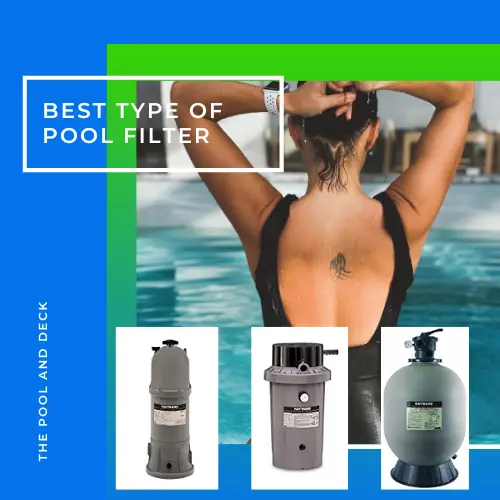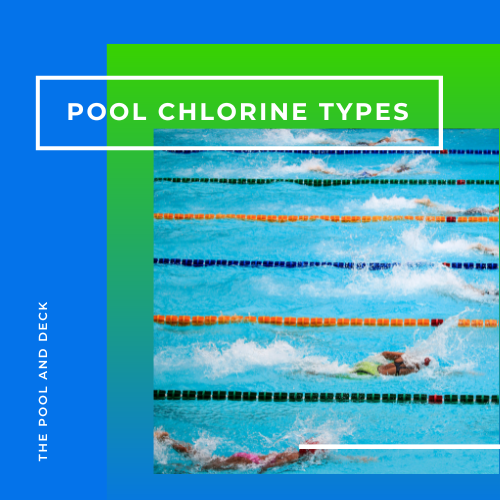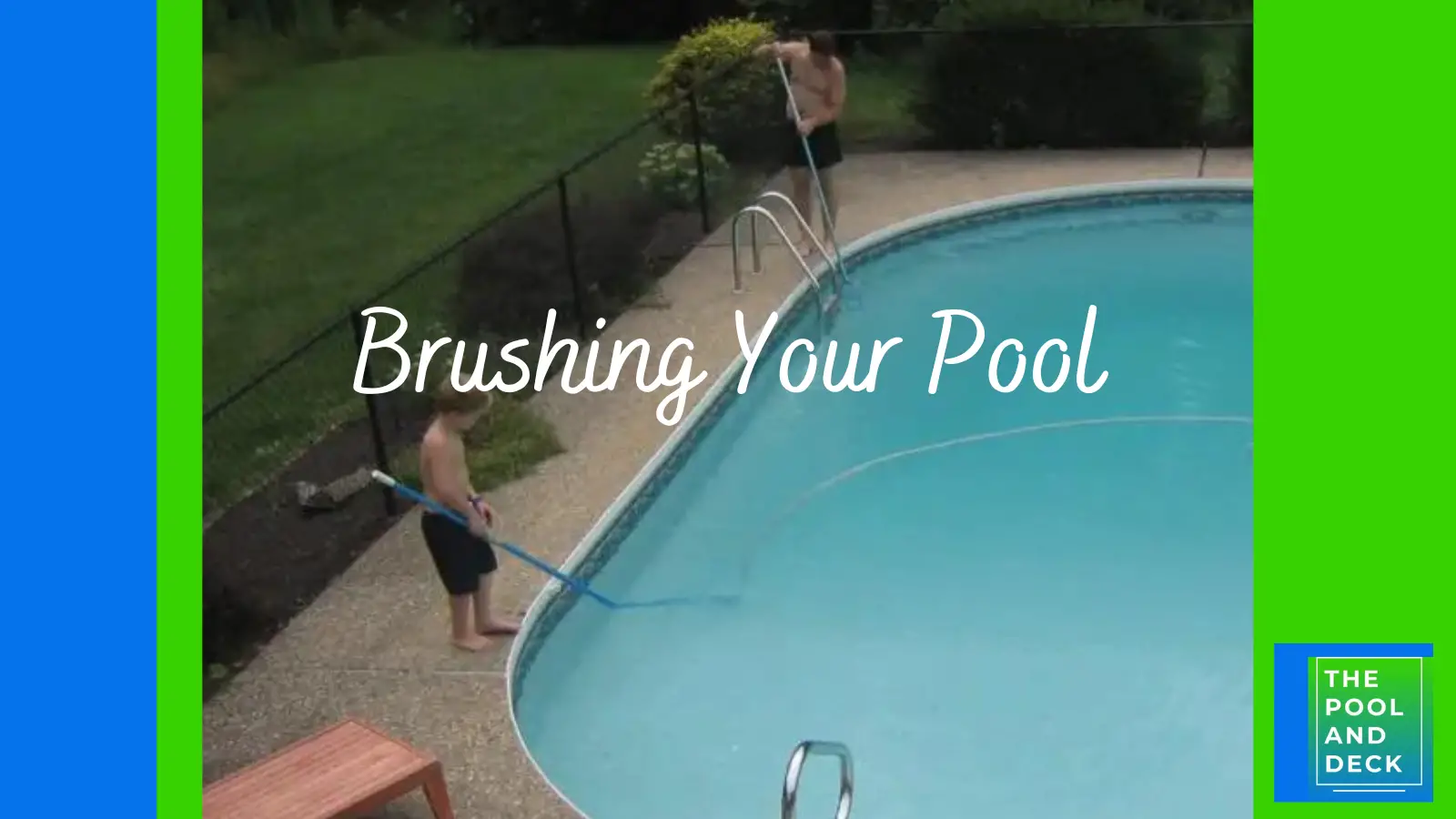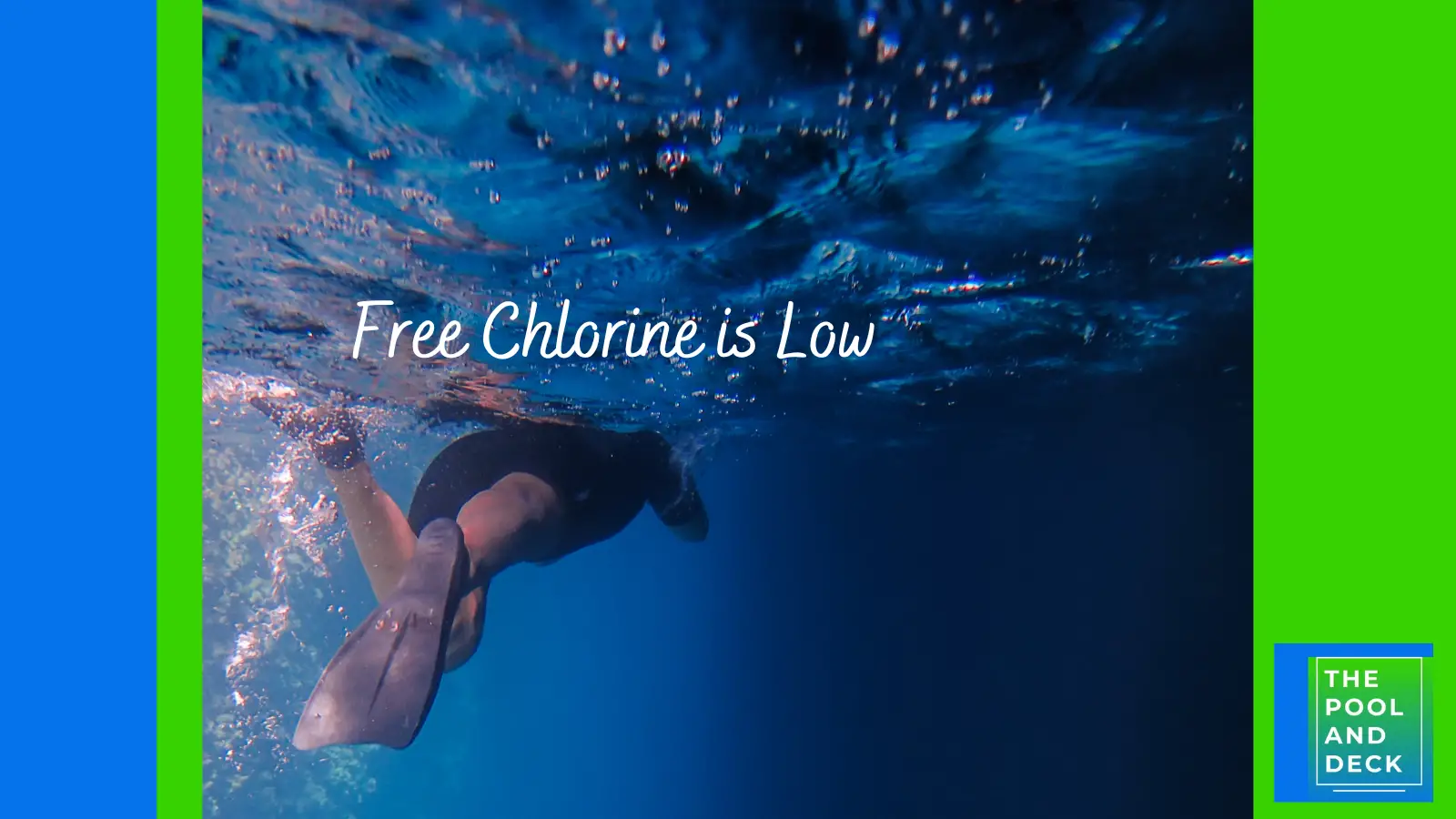When to Put Pool on Recirculate? The Ultimate Guide
As an Amazon Associate, I earn from qualifying purchases.
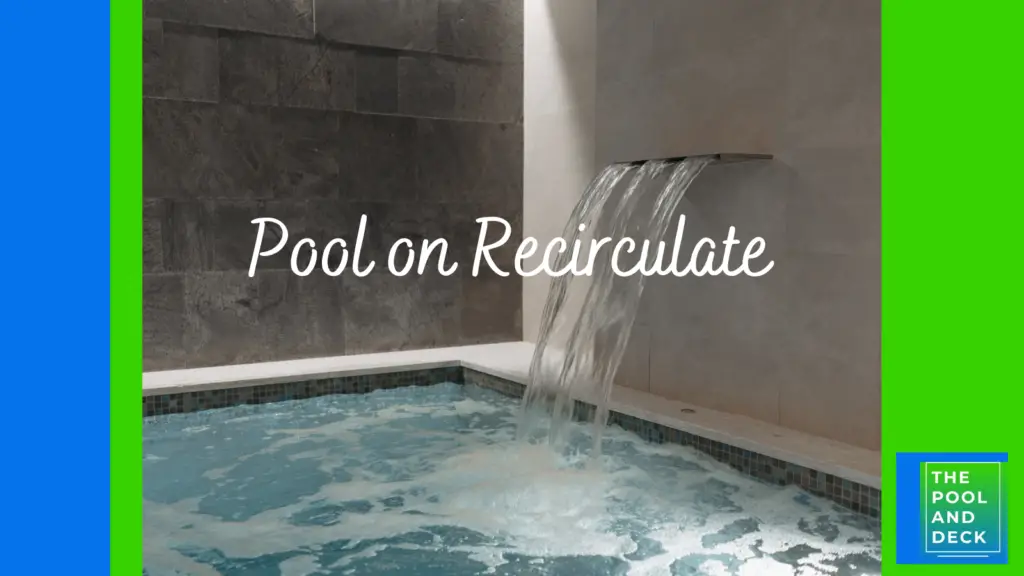
Table of Contents
When to Put Pool on Recirculate?
Have you checked the settings on the multiport valve on your pool sand filter? The 7 settings are Filter, Backwash, Rinse, Waste, Recirculate, Winter, and Closed.
You might wonder when to put pool on recirculate.
The pool recirculate position is necessary for circulating pool water to increase the water flow rate and reduce the risk of filter clogging.
Circulation is required to shock the pool but the filter would get overwhelmed by the extraordinary quantity of algae.
The pool recirculate setting on your pump isn’t something you’ll use daily, but it’s a lifesaver in specific situations. Here are the most common scenarios where you should use pool recirculate position.
Use Pool Recirculate Position When Adding Floc to Your Pool
When your pool is cloudy and you want to clear it fast, flocculant, rather than a clarifier, is the right pool chemical to use. The flocculant will clump together the microscopic solid contaminants and sink them to the floor.
BioGuard Powerfloc is a very powerful flocculant for swimming pools. BioGuard PowerFloc clears excessively cloudy water. Use it after a rainstorm or a period of time when your pump wasn’t running (perhaps during a vacation). The greater the amount of debris in the water, the faster it works.
It settles suspended particles to the bottom for removal by vacuum and makes water clear and sparkling. Product Dosage 8 fl oz per 10,000 gallons of water.
You do not want the clumped debris finding its way to the filter medium and clogging it. Yet you want the flocculant to circulate throughout the pool. Run your pool filter on the Recirculate mode at this time.
So you can use the Recirculate position on the multiport valve of your sand filter, anytime you have to add pool chemicals and broadcast them evenly throughout the pool, but do not want the contaminants to clog up the filter medium.
When the pool filter is set to Recirculate position, the solid debris remains inside the pool while the chemicals are circulated. The solid waste that sinks to the pool bottom can then be vacuumed to waste.
Use Pool Recirculate Position if Part of Your Filter is Broken
There are instances when a part of your pool sand filter is broken and it is not filtering. If the filter can still be run on “Recirculate” mode, do it.
Circulation of the sanitizer is essential to ensure that the pool water does not stagnate and your pool remains free of pathogens.
Of course, get the filter fixed as soon as possible. You want your pool to be clear of solid particles and debris too!
Recirculate After Adding Pool Chemicals
Certain pool chemicals, like shock treatments or algaecides, need even distribution to be effective. Using the recirculate setting ensures the chemicals are mixed thoroughly throughout the water.
Unlike the filter setting, it prevents contaminants from clogging the filter while ensuring quick and efficient chemical circulation.
Pool Recirculate Position During Winterization
Winterizing your pool requires careful attention to its chemical balance. The pool recirculate setting helps distribute closing chemicals evenly throughout the water, ensuring your pool stays clean and balanced during the off-season.
This prevents uneven chemical concentration, which could damage your pool liner or leave areas untreated.
When NOT to Use Pool Recirculate Setting
While recirculating is highly useful, it’s not suitable for every situation. Avoid using it when your pool has visible debris or dirt, as it doesn’t filter out contaminants.
Similarly, don’t rely on recirculation for regular pool cleaning or maintenance—its purpose is to bypass the filter, not replace it.
For more detailed information on all settings check out my post Pool Multiport Valve Settings (The Best Guide With Simple Schematics!).
Understanding the Pool Recirculate Setting
To make the most of the pool recirculate setting you need to understand how it works and how it differs from other settings like filter, backwash, or rinse.
How Does Pool Recirculate Work?
When you set your pool pump to recirculate, the water bypasses the filter entirely. Instead of flowing through the filter media (like sand, DE, or cartridges), the water moves from the pump directly back into the pool.

This closed-loop system ensures that water keeps circulating without the risk of clogging or damaging the filter.
Think of it as a way to “fast-track” water movement. Since the filter isn’t involved, this mode is handy for distributing chemicals or maintaining water flow when the filter is compromised.
Why Use Recirculate Instead of Filter?
The filter setting is your go-to for everyday cleaning, but there are times when you need to bypass it. Here’s why you might choose to recirculate:
- Avoid Clogging the Filter: Some treatments, like flocculants, can gum up your filter, reducing its efficiency. Using recirculate prevents this issue.
- Faster Chemical Mixing: The high flow rate of the recirculate mode ensures chemicals like shock or algaecides are evenly distributed in less time.
- Filter Maintenance or Repairs: If your filter isn’t working, the recirculate position on the pump allows you to keep water moving while you address the problem.
What is the Difference Between Recirculate and Backwash?
Although both settings bypass regular filtration, they serve very different purposes.
- The Recirculate position will move water quickly through the system without filtering it. It’s ideal for distributing chemicals or water circulation when the filter isn’t functioning.
- The Backwash position is to clean the filter by reversing the water flow and flushing out trapped debris. It’s a maintenance setting, not one for routine circulation.
Benefits of Using the Recirculate Setting
The key benefits of using the recirculate setting on your pool pump are explained below:
Signs You May Need to Use Recirculate
It’s not always obvious when to switch your pump to recirculate, but here are some clear indicators:
- Cloudy Water: If your pool water is cloudy and requires chemical treatments like flocculants, pool recirculate setting ensures the chemicals are evenly spread without clogging the filter.
- Filter Malfunction: If your filter isn’t working properly or is undergoing cleaning or maintenance, using the pool recirculate position keeps water flowing to prevent stagnation.
- Chemical Shocking: After shocking your pool, the recirculate mode mixes the chemicals quickly, ensuring proper sanitization.
Potential Drawbacks of Overusing Recirculate
While the pool recirculate position is useful, overusing it is not advisable as it can lead to:
- No Filtration: Since the water bypasses the filter, debris and contaminants remain in the pool. Extended use without filtering can lead to poor water quality.
- Chemical Imbalances: Over-relying on recirculation for chemical mixing without proper filtration can cause uneven water treatment or hot spots of concentrated chemicals.
- Missed Cleaning Opportunities: Regular filtering removes debris that could otherwise settle at the bottom or clog the system. Using recirculate too often skips this critical cleaning step.
Pool Recirculate Setting: Some Common Misconceptions
The pool recirculate setting is sometimes misunderstood, leading to improper use or missed opportunities to solve pool problems efficiently.
Misconception 1: Recirculate Replaces Filtration
Using the pool recirculate setting is certainly not the same as using the pool filtration setting. They are totally different functions.
While recirculating keeps water moving, it doesn’t filter it. Dirt, debris, and contaminants remain in the water since the filter is bypassed. Regular filtration is essential for maintaining pool water quality and clarity.
Misconception 2: Recirculate Can Be Left On Indefinitely
The recirculate mode is a temporary solution, not a permanent fix. Using it for extended periods can lead to poor water conditions as debris accumulates and chemicals are unevenly distributed.
You must switch back to the filter setting once the specific issue has been resolved.
Misconception 3: Recirculate is Only for Emergencies
While it’s true that the recirculate setting is invaluable during emergencies like a broken filter, it also has preventive and maintenance uses.
For example, it’s ideal for quickly distributing chemicals during regular pool care or before closing your pool for winter. Don’t overlook its versatility just because it’s not part of your routine settings.
Misconception 4: Recirculate and Backwash Are Interchangeable
Some pool owners mistakenly believe that recirculate and backwash perform similar functions. In reality, they serve completely different purposes.
Backwash cleans your filter by reversing water flow, while recirculate bypasses the filter entirely.
Step-by-Step Guide to Activating Recirculate Mode
Switching your pool pump to the recirculate setting is a straightforward process. Follow this step-by-step guide to activate recirculate mode and get the most out of your pool pump.

Step 1: Turn Off the Pool Pump
Always start by turning off your pool pump. Switching settings while the pump is running can damage the internal components, such as the multiport valve or gaskets.
Safety first—ensure the pump is completely powered down before proceeding.
Step 2: Locate the Multiport Valve
The multiport valve is usually on top or the side of your filter tank. It’s a circular dial, typically with 7 labeled settings, including filter, backwash, rinse, waste, and recirculate.
Step 3: Set the Valve to Recirculate
Press down on the handle of the multiport valve and turn it to the recirculate position. Ensure the handle locks securely into place to avoid leaks or improper operation.
Step 4: Restart the Pool Pump
Once the valve is set to recirculate, turn your pool pump back on. Water will now flow directly through the pump and bypass the filter, returning to the pool.
Step 5: Monitor the System
While using the recirculate mode, keep an eye on your pool’s water flow. Ensure that the pump is running smoothly and there are no unusual noises or leaks around the multiport valve.
Step 6: Return to Regular Settings When Done
When the task requiring recirculating is complete, turn off the pump again and move the valve back to the filter setting (or another appropriate mode).
Restart the pump and resume regular operation to maintain proper pool water quality.
Recirculate vs. Other Pool Filter Settings
Here’s how the recirculate setting compares to other frequently used settings like filter, backwash, rinse, and waste.
Filter Setting
- Purpose: Everyday maintenance and debris removal.
- Function: Water passes through the filter to remove dirt, debris, and contaminants.
- When to Use: Regular pool circulation to maintain pool water quality.
- Difference from Recirculate: Filter cleans the water; recirculate bypasses the filter entirely.
Backwash Setting
- Purpose: Cleans the filter.
- Function: Reverses water flow through the filter to flush out trapped debris.
- When to Use: When filter pressure is high or after heavy cleaning.
- Difference from Recirculate: Backwash cleans the filter; recirculate bypasses it.
Rinse Setting
- Purpose: Clears debris after backwashing.
- Function: Water flows through the filter to flush residual debris into waste.
- When to Use: After backwashing, before returning to the filter setting.
- Difference from Recirculate: Rinse is for post-backwash cleanup; recirculate is for bypassing the filter.
Waste Setting
- Purpose: Removes water and debris from the pool.
- Function: Directs water straight out of the pool system.
- When to Use: Vacuuming large debris or lowering the water level.
Difference from Recirculate: Waste removes water; recirculate keeps water in the pool.
Frequently Asked Questions About Pool Recirculate
How long can I leave my pool pump on recirculate setting?
As a thumb rule, 2 hours of running the pool filter on Recirculate is enough to evenly distribute Cal Hypo or Floc.
Running a pool sand filter in “recirculate position” is the same as running a pool cartridge filter without the cartridge.
How long to recirculate after adding shock?
Run recirculate for 1–2 hours to evenly distribute the shock. After that, switch to the filter setting to clear contaminants.
Should my pool pump be on circulate or filter?
Use filter for daily cleaning and debris removal. Use recirculate for specific tasks like distributing chemicals or troubleshooting a broken filter.
Can I swim while my pool is on recirculate?
Yes, but only if the water is chemically balanced and free of treatments like flocculants or shock that require time to settle.
Is Whirlpool the Same as “Recirculate”?
Yes. The Whirlpool setting is the same as the Recirculate setting.
Recommended Pool Sand Filters
Best Sand Filter
The Hayward Pro Series Sand Filter for in-ground swimming pools will provide you with hassle-free, effective filtration. The weather-proof tank is constructed of a tough, color-fast polymeric material.
Even water distribution over every square inch of sand is ensured by an integral top diffuser, self-cleaning under drain and 360-degree slotted laterals. Advanced full-flow technology reduces energy costs by achieving excellent filtration, so you can run your filter less.
Thorough backwashing allows for crystal-clear water. Filter is complete with tank, 7-way multi-port valve, sight glass and pressure gauge. 7-way Valve Positions: Filter, Waste, Winter, Closed, Backwash, Recirculation, Rinse.
Hayward Pro Series Pool Sand Filter
- Durable corrosion-proof materials for dependable all-weather performance
- Large pressure sand/water drain for rapid winterizing or servicing
- Side-mount models are available with 6-position VariFlo or 2-position slide valve
Thank you very much for reading the post. I do hope you found it informative and helpful.


